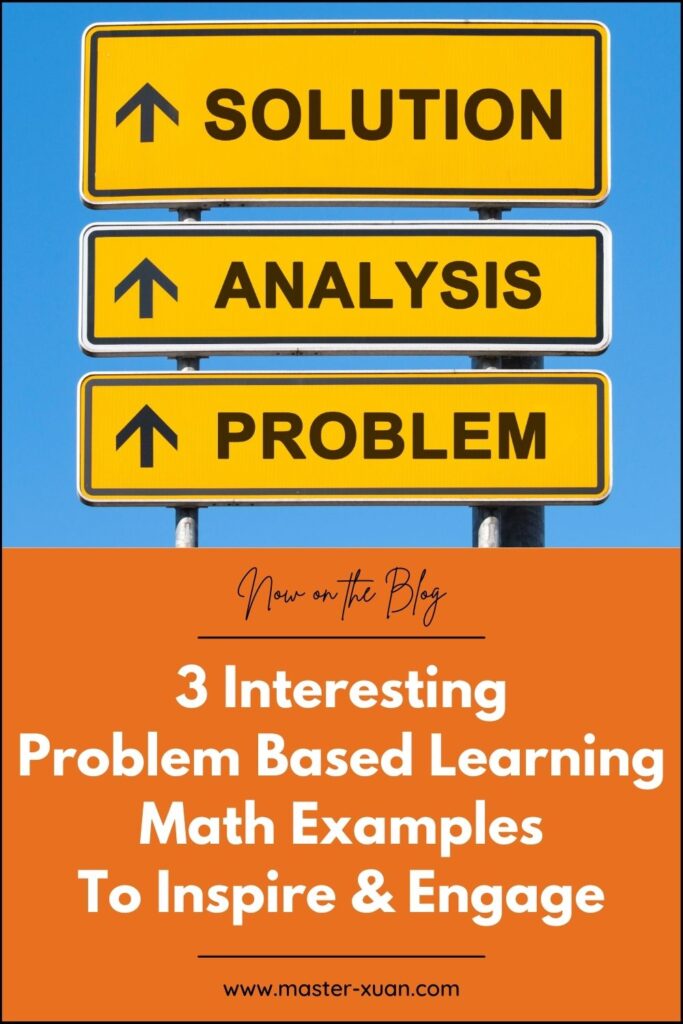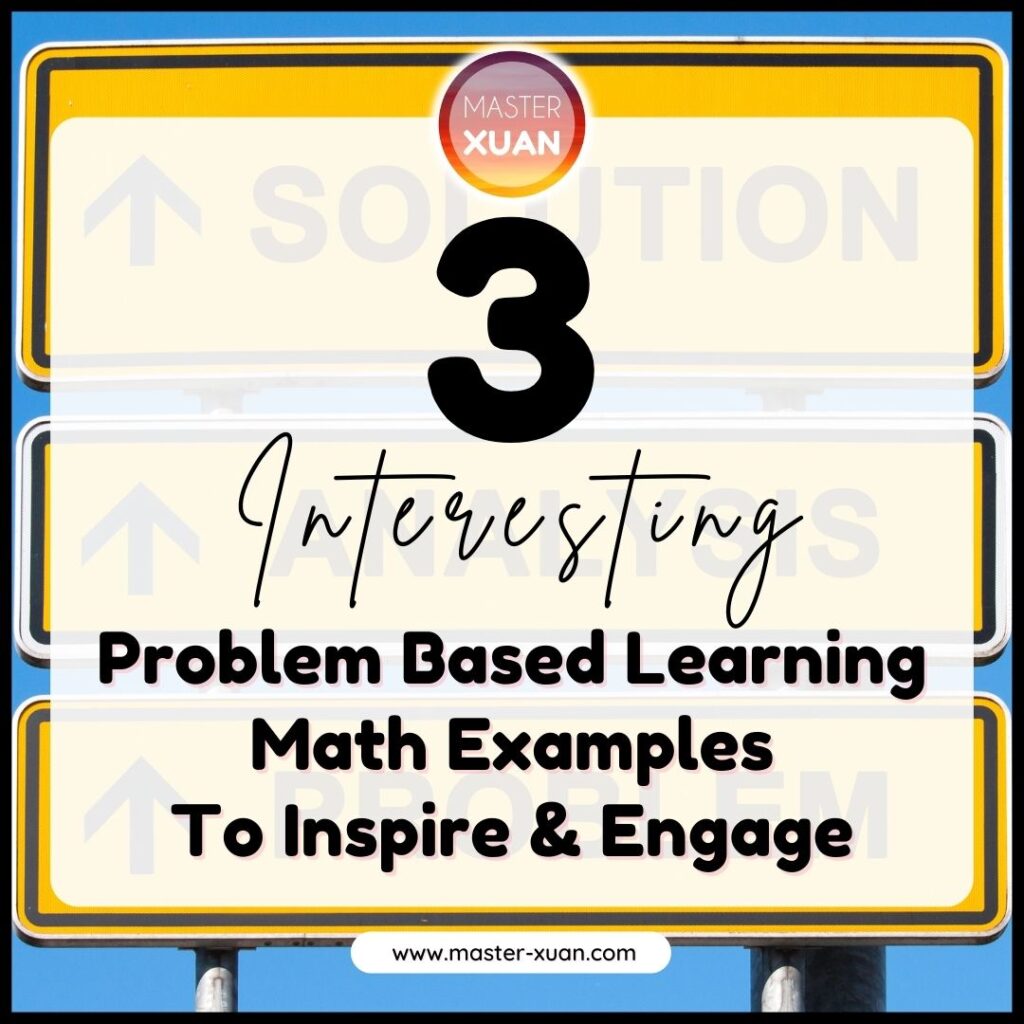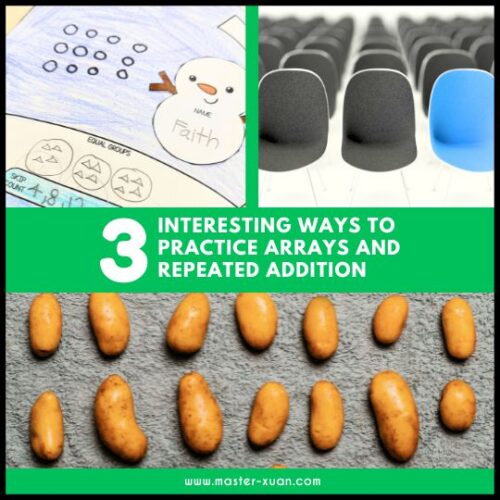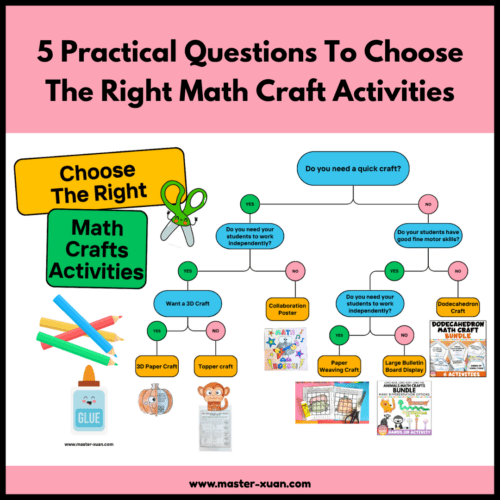In this article, I will provide some problem based learning math examples to give you some ideas on how to create great problem-based learning tasks.
But before we start, let me explain some common questions that arise based on the term problem-based learning. Because I wasn’t taught with this approach, this is relatively foreign to me too.
So as I was researching this topic, I sought out ChatGPT for some answers.
1) What is problem-based learning?
Problem-based learning (PBL) is a teaching approach that involves presenting content through real-world examples and scenarios. It is a student-centered method where teachers guide students in discovering solutions to problems, encouraging exploration and critical thinking.
2) What is a problem-based task in math?
A problem-based task in math is an activity or assignment that requires students to apply mathematical concepts to solve a real-world problem. Instead of simply memorizing formulas, students engage in problem-solving, promoting a deeper understanding of mathematical principles.
3) What is the problem-based learning approach in developing mathematical skills?
The problem-based learning approach in developing mathematical skills focuses on presenting students with authentic, context-rich problems. This approach encourages students to actively explore and understand mathematical concepts, fostering problem-solving abilities and the practical application of math in real-life situations.
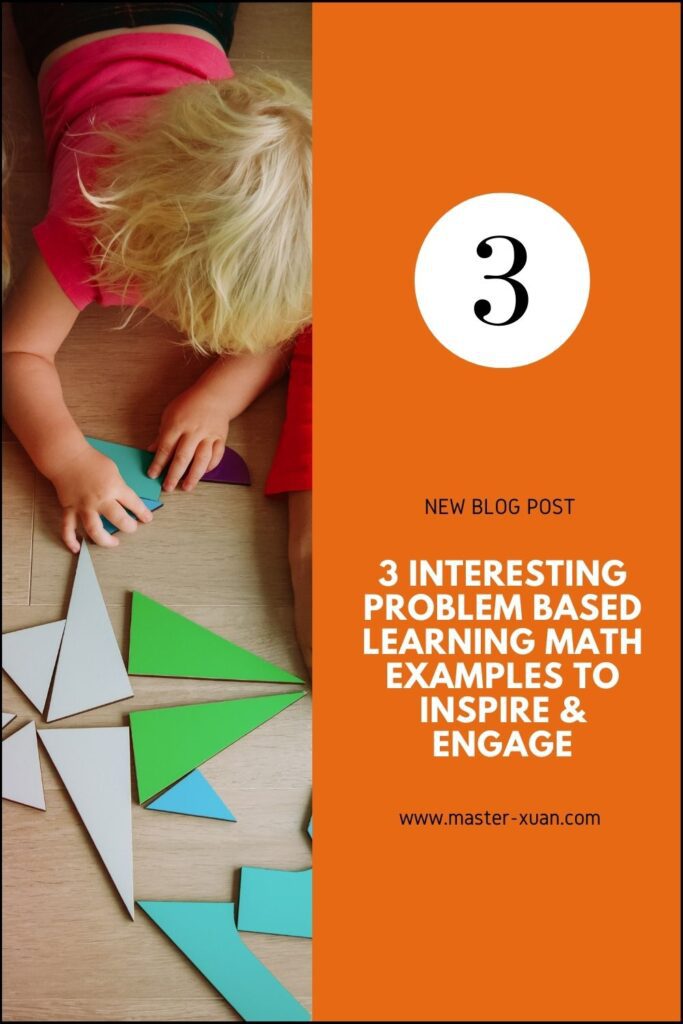
4) What are the three types of problem-based learning?
1. Ill-Structured Problems (ill-structured): These are open-ended problems with no clear solution path, encouraging students to explore multiple approaches and develop problem-solving skills.
2. Well-Structured Problems: These problems have a defined solution path, providing students with a clear method to reach an answer. Well-structured problems are often used to introduce foundational concepts.
3. Decision-Making Problems: In these problems, students must make choices or decisions based on available information, helping them develop critical thinking and analytical skills.
5) What are the benefits of problem-based math?
Problem-based math offers several benefits:
1. Real-world Application: Students can apply mathematical concepts to solve practical, real-world problems, enhancing their understanding of the subject’s relevance.
2. Critical Thinking: Engaging in problem-solving tasks promotes critical thinking skills, encouraging students to analyze, evaluate, and apply mathematical principles in a meaningful context.
3. Collaboration: Problem-based math often involves collaborative learning, allowing students to work together to explore solutions and share diverse perspectives.
4. Motivation: Real-world scenarios and challenging problems can boost student motivation by making math more interesting and showing its practical utility.
5. Deeper Understanding: Students gain a deeper understanding of mathematical concepts as they explore and apply them in various problem-solving situations.
6) What are the weaknesses of problem-based learning?
While problem-based learning (PBL) has its strengths, it also has some potential weaknesses:
1. Lack of Content Coverage: PBL may require more time to delve into complex problems, potentially leading to the omission of certain curriculum content. This can be a concern if there is a need to cover a broad range of topics within a limited timeframe.
2. Uneven Group Participation: Collaborative learning is a key aspect of PBL, but it can result in uneven participation within groups. Some students may contribute more actively, while others might become passive observers, leading to an imbalance in the learning experience.
3. Assessment Challenges: Assessing individual contributions in a group-based PBL setting can be challenging. Determining how much each student has contributed to the final solution may not always accurately reflect their understanding of the content.
4. Teacher Training: Implementing effective PBL requires specific training for teachers. If educators are not adequately prepared, it can lead to difficulties in facilitating the learning process and guiding students through problem-solving activities.
5. Student Resistance: Some students may resist the shift from traditional teaching methods to PBL, particularly if they are more accustomed to a structured, teacher-directed approach. Adapting to a more self-directed learning environment can be challenging for certain individuals.
6. Resource Intensity: PBL can be resource-intensive, requiring materials, technology, and a well-designed curriculum. Schools with limited resources may find it challenging to implement PBL effectively.
7. Potential for Surface Learning: In some cases, students may focus more on completing the task rather than deeply understanding the underlying concepts. This can result in surface learning, where students memorize specific procedures without grasping the broader principles.

7) What are examples of problem-based learning activities?
- Designing a Geometric Playground: Students apply geometric concepts to plan a playground layout, considering shapes, dimensions, and spatial relationships.
- Planning a Community Garden: Students engage in hands-on planning, deciding on the layout, seed quantities, and plant placement using mathematical concepts like area, perimeter, and multiplication.
- Organizing a School Fundraiser: Students develop a budget for a school event, considering expenses such as venue costs, promotional materials, and refreshments, applying addition, subtraction, multiplication, and division skills.
- Analyzing Data for Real-World Problems: Students tackle real-life scenarios by using mathematical skills to analyze data, draw conclusions, and propose solutions.
- Creating a Scale Model with Mathematical Proportions: Students build a scale model of an object or structure, incorporating mathematical proportions to accurately represent real-world dimensions.
- Budget Calculation: Calculate the various expenses for a special event such as venue rental, catering, and decorations. This scenario prompts students to use mathematical concepts like addition, subtraction, multiplication, and division to create a realistic budget.
3 Interesting Problem Based Learning Math Examples To Inspire & Engage
Now that we have a better understanding of this approach, I’m going to share with you 3 interesting problem based learning math examples that you can get to inspire you.
Percentage Math Worksheets – Project Based Learning Math – Plan A Trip To Earth
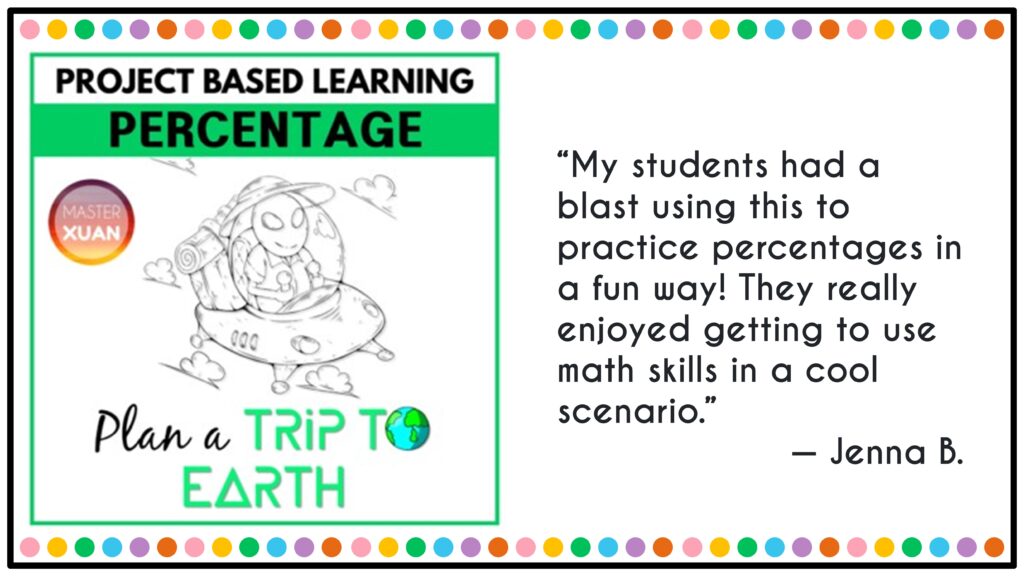
This is my first and only attempt at a project-based learning math resource.
To give a fresh new point of view, students are now aliens and planning for a holiday. They get the freedom to choose which country to go, what to bring, what to eat, where to stay, activities to do, what to buy etc.
This can’t be completed in just 2 hours, even with the simplified version. Unless students intentionally make easy choices, like eating the same food for six days, but that would defeat the purpose of the entire trip planning exercise.
While students show interest in this resource, they might feel fatigued after numerous calculations.
To tackle this, break it down into different stages and set various marking points.
It can be frustrating for students to finish everything, only to discover that most answers are incorrect due to an error at the beginning (even though this could happen in real-life planning).
This is not an easy project as each student can make different choices, resulting in diverse answers. There’s no shortcut; you’ll need to calculate and mark it yourself.
There is a reference answer, but only the few pages where there are standard answers can be used. The rest is more of an example for you and your students to have an idea how it works.
Students will likely enjoy this resource more if you join in. Let them share with you why they made specific choices.
Related Read: 5 Ratios And Percentages Worksheets You Need To Engage Math Students
Plan a Garden Project Based Learning
You can download this free math resource that is done by Kitten Approved Curriculum in TPT.
For this project, students can make their own choice and create their very own garden.
Included Activities:
- Garden Blueprint – area and perimeter 4.MD.3
- Buying Supplies – multiplication and/or multiplication with decimals, addition and subtraction 4.NBT.5, 5.NBT.5, 4.NBT.4, 5.NBT.7
- Draw Your Display
Run a Taco Truck PBL Challenge
Here’s another freebie that you can get in TPT from Briana Beverly.
Personally, I don’t really use this resource as Taco Truck is not a norm in Singapore and students are not familiar with it.
But I like the design and that it provides 3 sheets of taco supplies menus that display the options students have to pick from for ingredients, extra food, and more.
Final Thoughts
Hopefully these 3 problem based learning math examples help to inspire you. From planning an intergalactic holiday as extraterrestrial beings to creating a personalized garden or managing a taco truck challenge, these examples make math more fun!
The open-ended possibilities and the freedom to make their own choices engage students. Furthermore, students find it more relatable as they see the connection with the real world.
Just a heads up, there might be a few challenges when you try this, but good luck facing them if you decide to give it a shot!
By the way, I have another real-world math application resource that you might find interesting: Real World Data Analysis Problem – Covid-19 / Coronavirus case study
Here are some pins that you can save to bookmark this post. Save them to your Pinterest Board now! ↓
